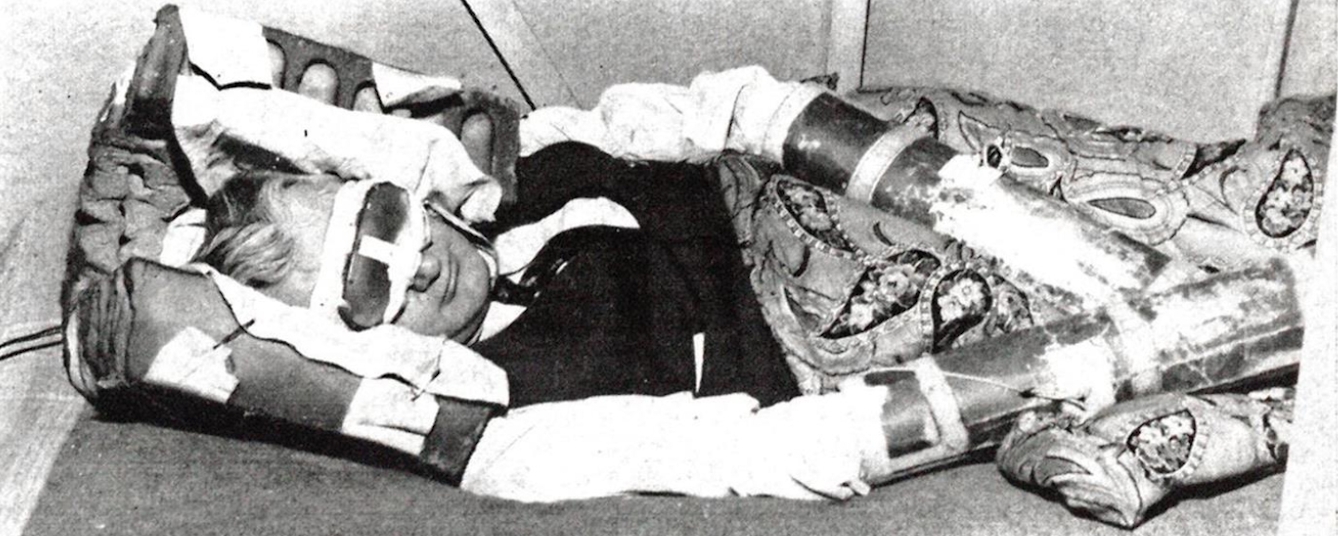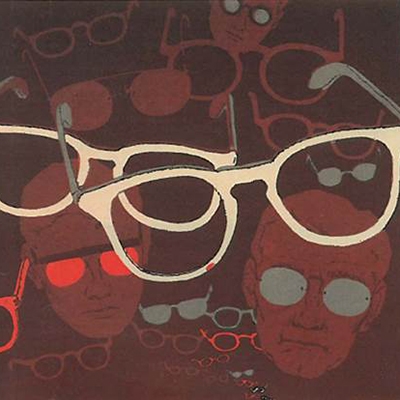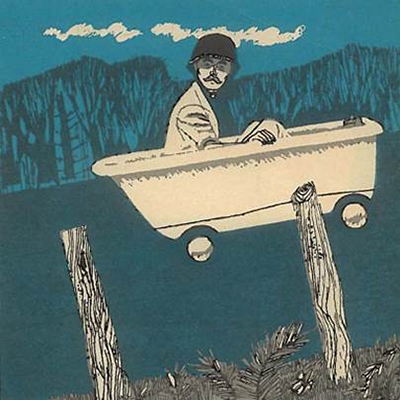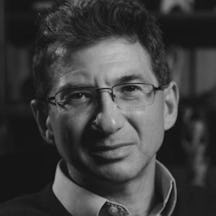When military-funded researchers set out to discover whether isolation techniques could facilitate brainwashing, neuroscientist John Lilly suggested instead that isolation might improve our own control over our minds.
Can isolation lead to manipulation?
Charlie WilliamsSarah MarksDaniel Pickaverage reading time 6 minutes
- Serial

In June 1951 a group of psychologists and doctors with ties to US, UK and Canadian military forces held a secret meeting at the Ritz-Carlton hotel in Montreal. Minutes from the meeting reveal that the discussion centred on the question of ‘brainwashing’, specifically those methods that could be used during interrogation to extract information, elicit false confession or manipulate behaviour.
The doctors considered various artificial conditions that could be used to create states of helplessness and extreme suggestibility. A proposal was put forward by the Canadian psychologist Donald Hebb to build an experimental chamber in which a human subject would be deprived of perceptual stimuli, to make their mind “susceptible to the implantation of new or different ideas”.
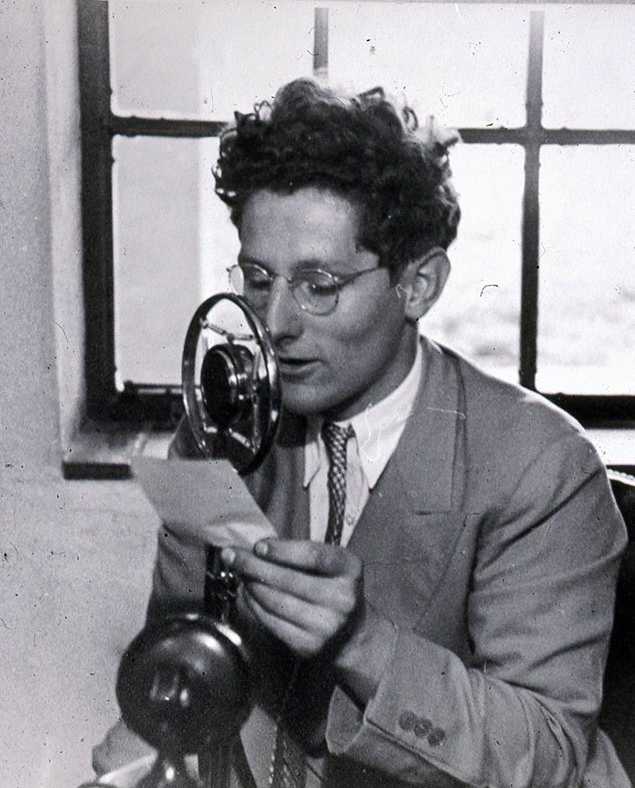
John Lilly
Following the meeting, Hebb was granted $30,000 over three years by the Canadian Defence Research Board for a series of experiments at McGill University into the isolated mind. Isolation and solitary confinement, which can have acute and lasting effects on mental health, has a long history as a form of punishment and as a mode of philosophical inquiry. Hebb’s studies in the early 1950s marked the beginning of a new wave of research dedicated to examining the effects of isolation in laboratory conditions.
By 1969 there were 17 experimental ‘centres’ in North America dedicated to sensory deprivation research, each employing their own elaborate modifications in design and technique. For almost a decade, sensory deprivation was seen as glamorous, sensational and ominous, associated with Cold War exploration and espionage. It featured in films such as ‘The Mind Benders’ in 1963, an episode of CBS’s television series ‘The Twilight Zone’ in 1959, and as a live TV experiment on the BBC’s flagship science programme ‘A Question of Science’ in 1957. Some saw it as a sinister intervention on the brain, others argued that it could enhance the mind in creative and liberating ways.
In Hebb’s original experiment at McGill, a group of doctoral students designed an experimental condition in which subjects – graduate students paid $20 a day – were placed in a severe state of perceptual monotony. Their arms and hands were enclosed in cardboard tubes to limit movement and tactile perception. They could hear only the sound of a white noise generator, and they wore opaque goggles so that their entire visual field was occupied by diffuse white light. They were fed, watered and ‘toileted’, but otherwise they were asked to stay in the situation for up to three days, or as long as they could.
The McGill experiments
In the McGill cubicle, subjects wore opaque goggles, stiff cuffs and rested on an air-foam pillow. The following images and illustrations appeared in Maclean's magazine in May 1954, alongside an article entitled 'Look what utter boredom can do'.
Experiments at McGill in induced boredom brought on hallucinations. One student was confronted by a strange field of unattached glasses.
One man had the happy picture of a bathtub, complete with occupant, complete with helmet, float before him on his bed of sheer boredom.
Students could 'feel' their hallucinations. One saw a strange space ship that streaked tracer bullets. They felt like pea-shooter pellets.
The image of "a procession of squirrels with sacks over their shoulders marching purposefully" first reported in a 1954 paper by W. H. Bexton, W. Heron, and T. H. Scott was widely reported in news reports and by other researchers.
Some claimed to enjoy the experience for a time, but others reported distress, disordered thinking and visual hallucinations. As the experimenters noted, one subject chose to do manual labour for a third of the pay rather than complete the experiment.
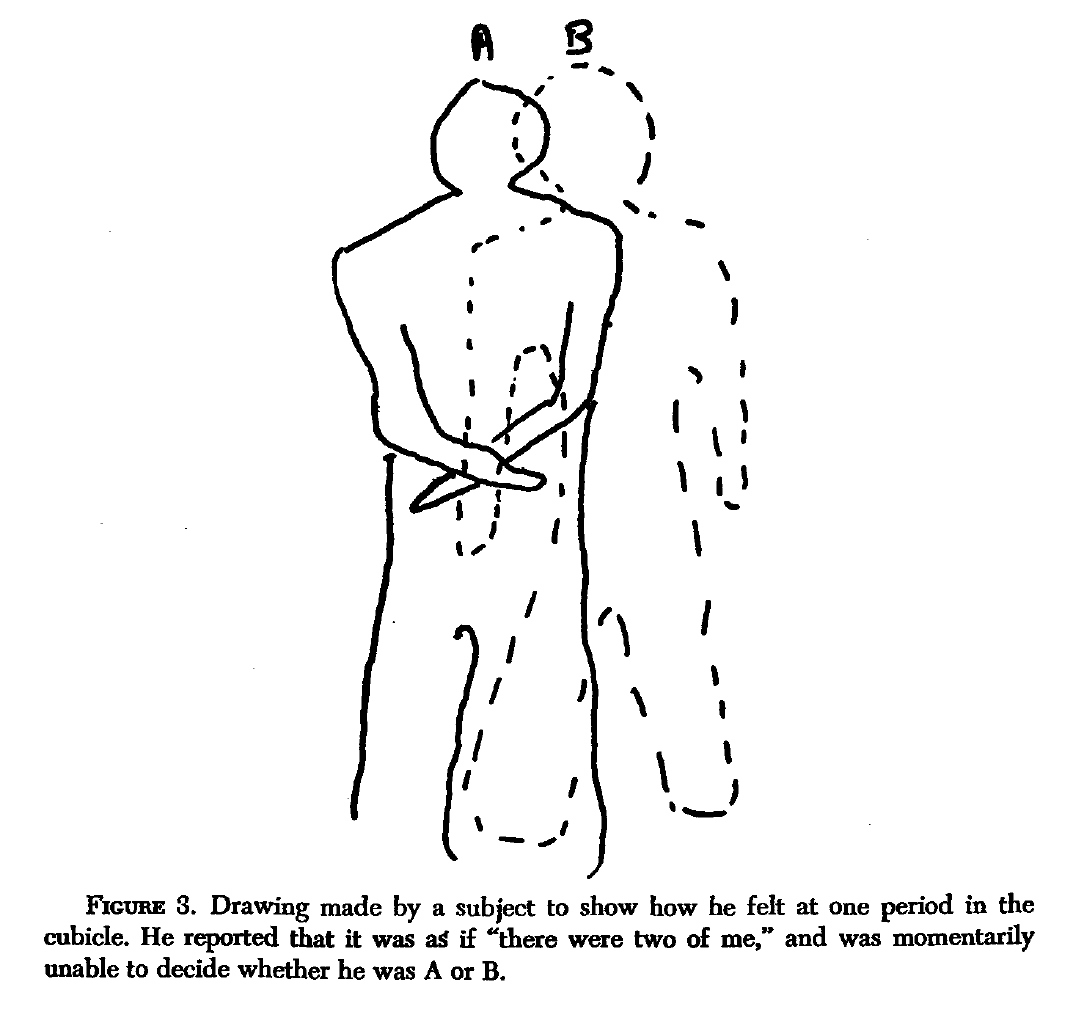
One subject in an experiment at McGill described feeling as if his body occupied two overlapping locations.
Playing propaganda
The researchers also played the subjects what they called ‘propaganda’ records, containing audio recordings that made claims about the existence of paranormal phenomena. They thought that the captive subjects, suitably disoriented, deprived and hungry for stimulus, might accept the propaganda material less critically than if they were in a normal perceptual environment.
The results have been difficult to replicate, but experimenters claimed that the records had a significant influence on their subjects. “A number of the experimental subjects,” wrote Hebb, “unlike the controls, went to the library to borrow books on psychical (not psychological) research, mind-reading, and so forth; there were spontaneous reports of being afraid of ghosts, late at night.” In another account, one of his students wrote that “one man even reported that he was trying to use telepathy as an aid to playing poker.”
The method may have been crude, but the McGill experiments proposed that information could be transferred from a storage device, in this case a vinyl record, into the information processor of the human brain. In terms like these, borrowed from the emergent disciplines of cybernetics and information theory, neuroscientist John Lilly explained the technique in a paper delivered to a group of military and intelligence officials in the late 1950s. When a person is isolated for long enough, Lilly wrote, they tend to absorb signal data on demand. Under these conditions there can be an “injection of ‘outside data’ into the ‘inside generators’, with some re-programming developing”.

A schematic diagram of John Lilly and Jay Shurley's isolation experiment.
Lilly was Chief of the Section of Cortical Integration at the National Institute of Mental Health and was an early pioneer of brain mapping and electrostimulation of the brain. Inspired by Hebb’s research, he developed his own sensory isolation technique in which subjects were fully submerged in a tank of body-temperature water. The possibilities for such science being used to control human minds was not lost on Lilly, who had described his electrostimulation technique as having the potential to gain “push-button control over the totality of motivation and consciousness.” But he was also interested in how such techniques could be used by an individual to explore, analyse and modify their own mind, or even to seek a certain kind of psychic liberation.
The McGill experiments were conducted on volunteers, but Lilly and his colleague Jay Shurley used themselves as subjects in the water isolation tank. They were increasingly fascinated by the mind-bending subjective experiences they had inside the tank. Lilly left the National Institute of Mental Health in the late 1950s and developed a user-friendly version of the tank in which the subject floats horizontally on a saturated pool of Epsom salts.
Jay Shurley and Jerrie Cobb
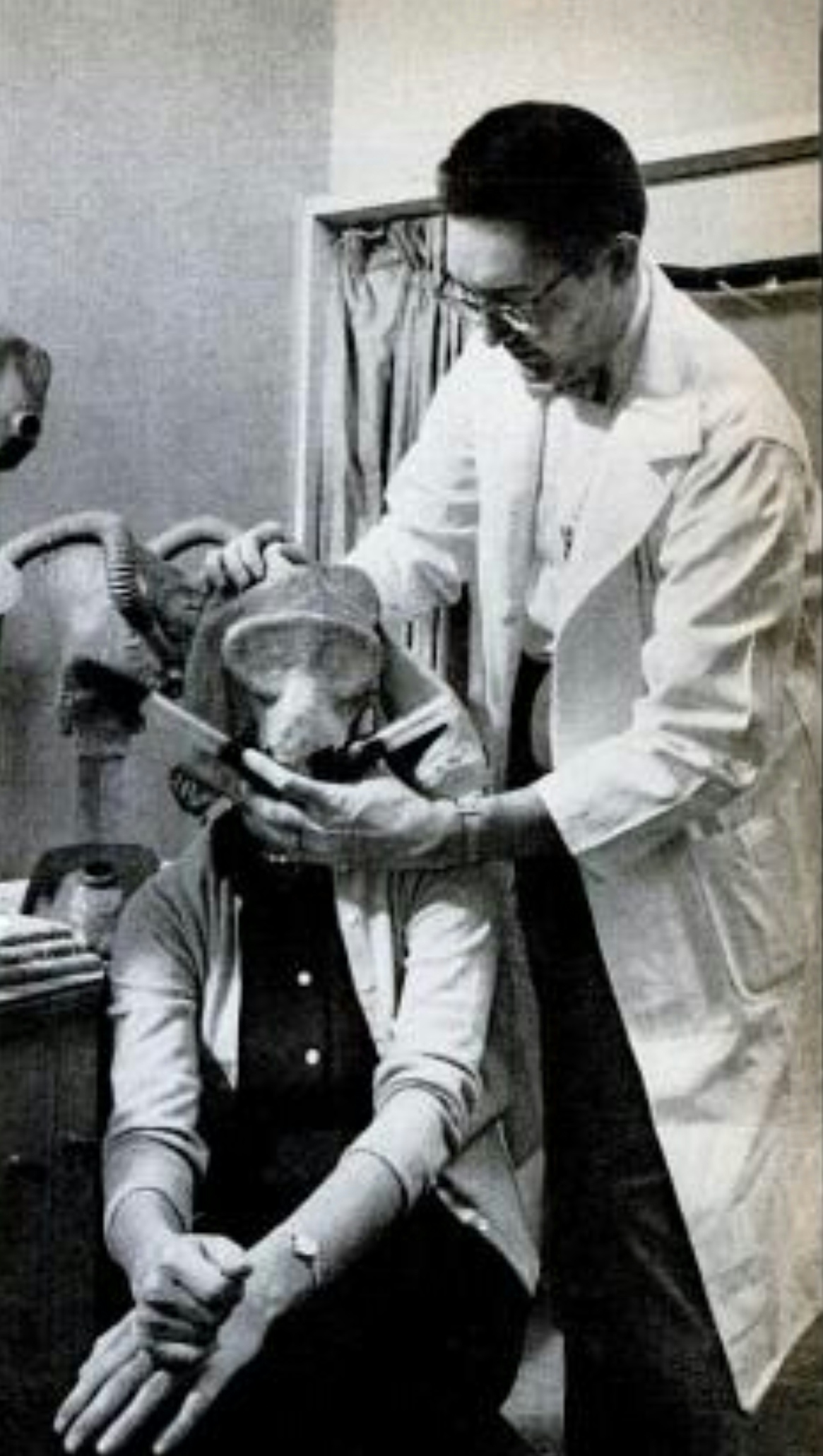
The water isolation technique pioneered by John Lilly at the NIMH was continued by his colleague Jay Shurley at the University of Oklahoma. In this image a sealed mask is placed on the head of the experimental subject.
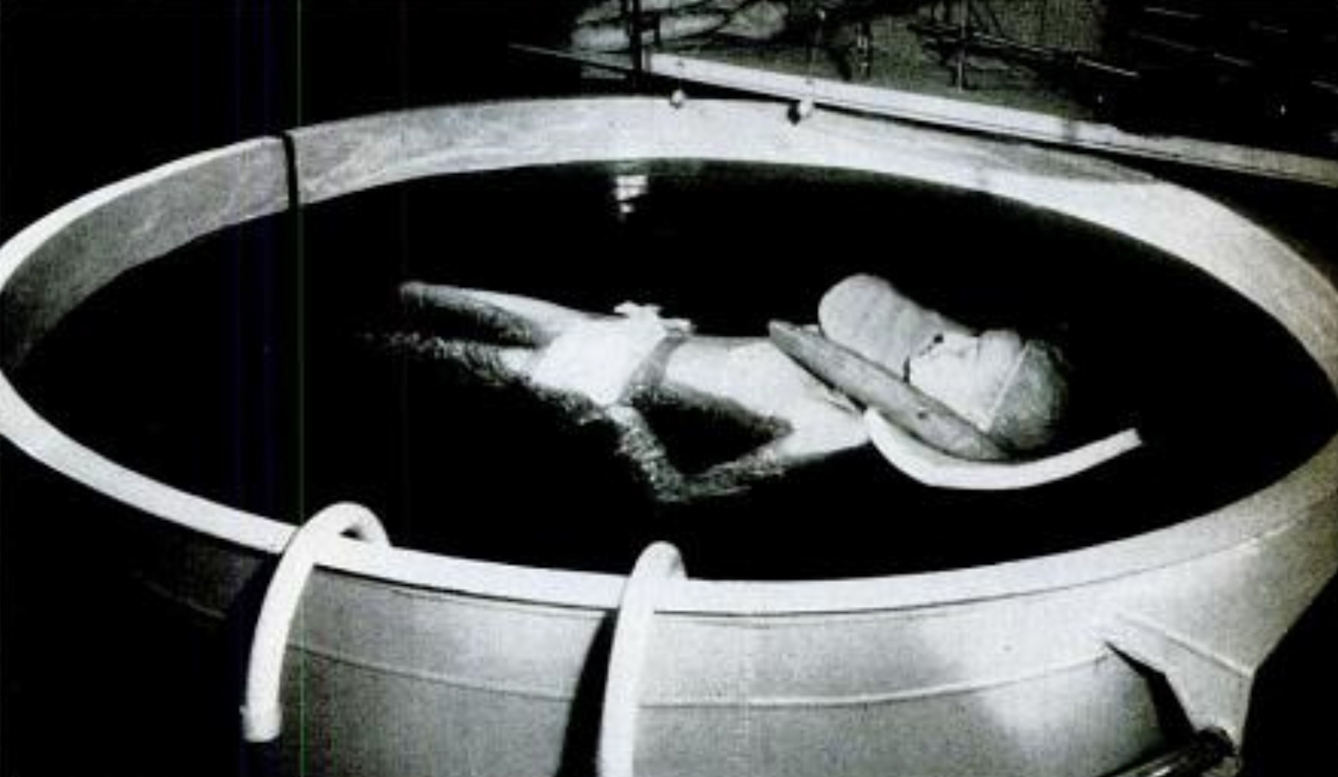
Tests using the isolation tank were carried out on over 300 subjects. In these images, published in Life magazine, would-be astronaut Jerrie Cobb undergoes isolation testing as part of Mercury 13, a privately funded project aimed at gaining inclusion for women in NASA's astronaut programme.
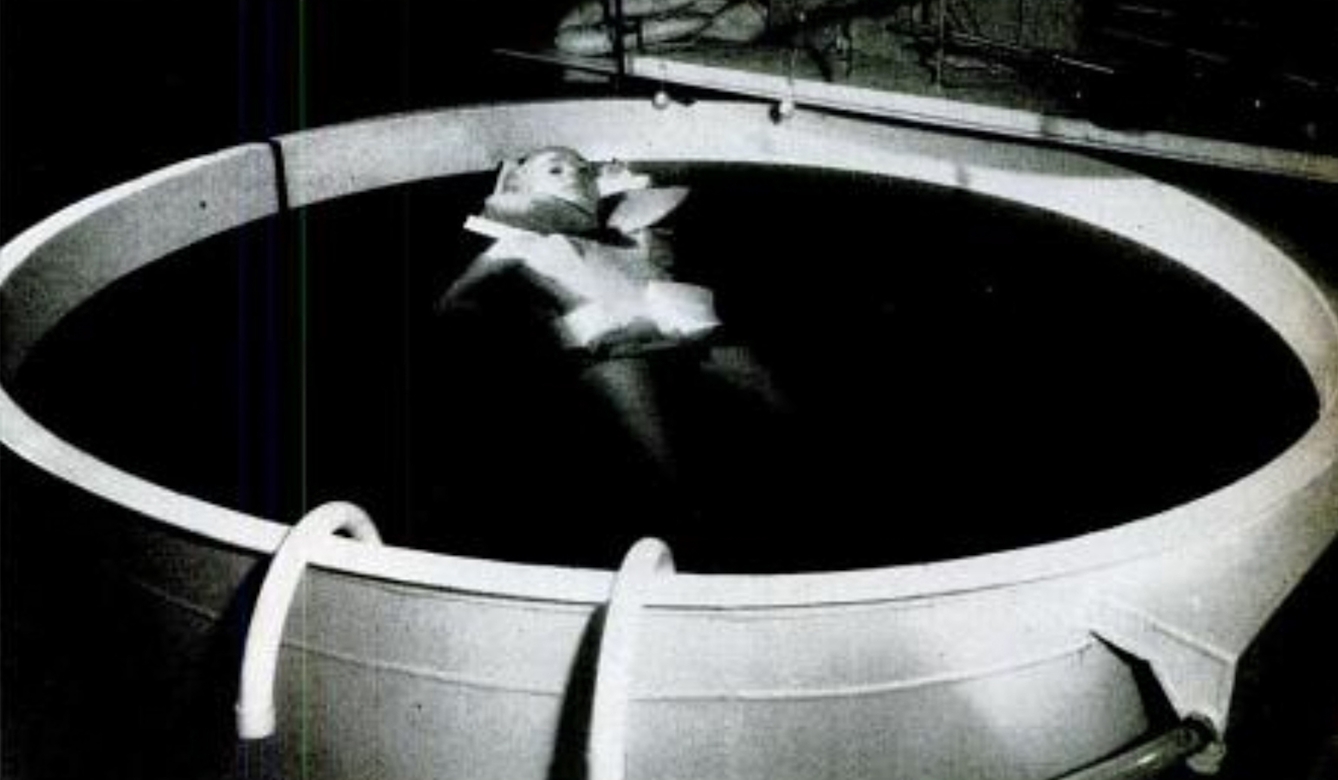
Jerrie Cobb naps in the isolation pool .
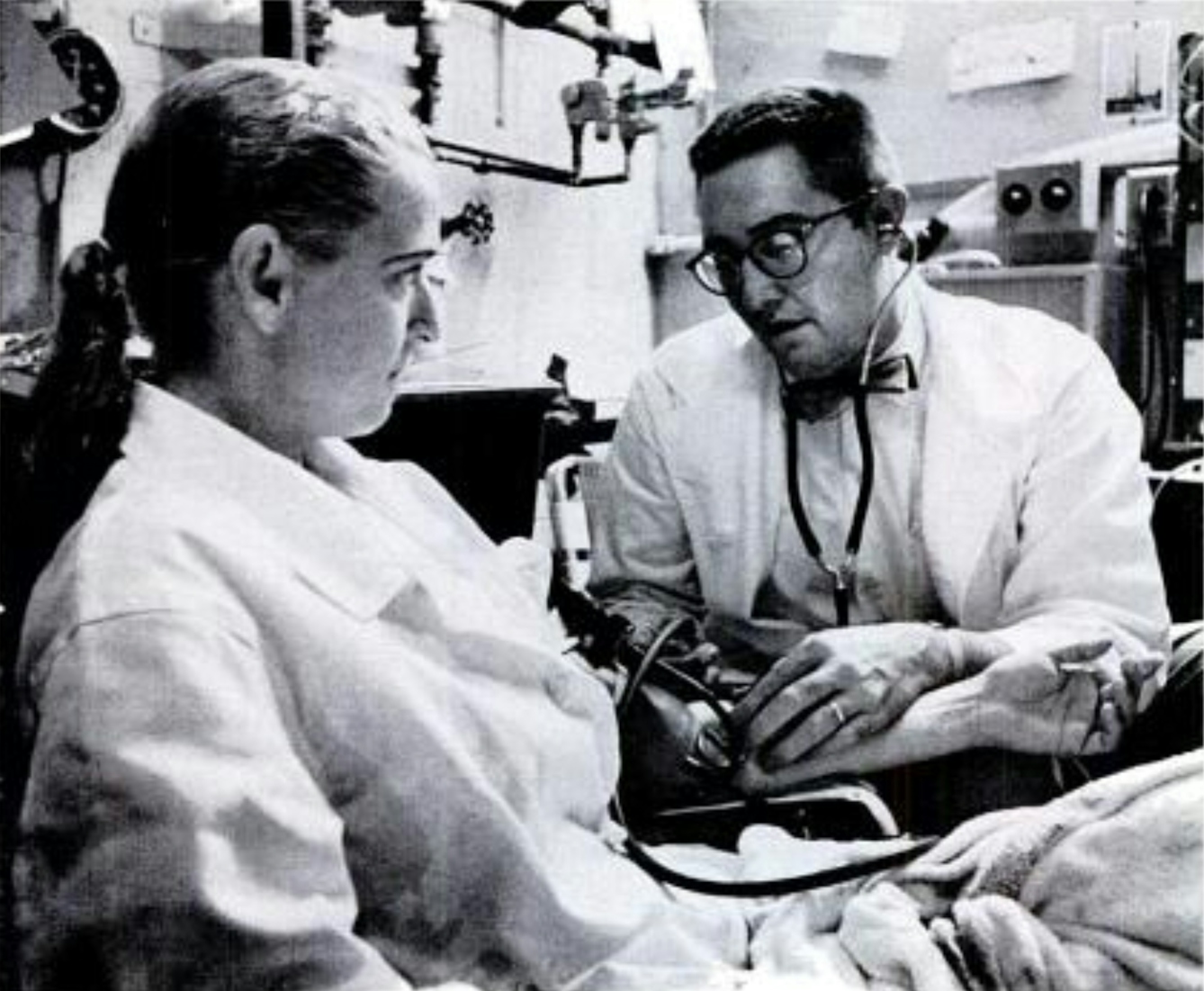
Jay Shurley takes Jerrie Cobb's temperature and blood pressure.
Brain hacking
Floatation tanks are still used today as a wellbeing therapy and are currently undergoing clinical trials for treating anxiety, depression and PTSD. Lilly wrote extensively about how tanks could be used to explore consciousness but also to gain greater control over one’s own mind. Lilly saw the human brain as a ‘programmed biocomputer’ and argued that the isolation tank offered the user a mode of accessing, understanding and intervening in their own ‘internal programming’.
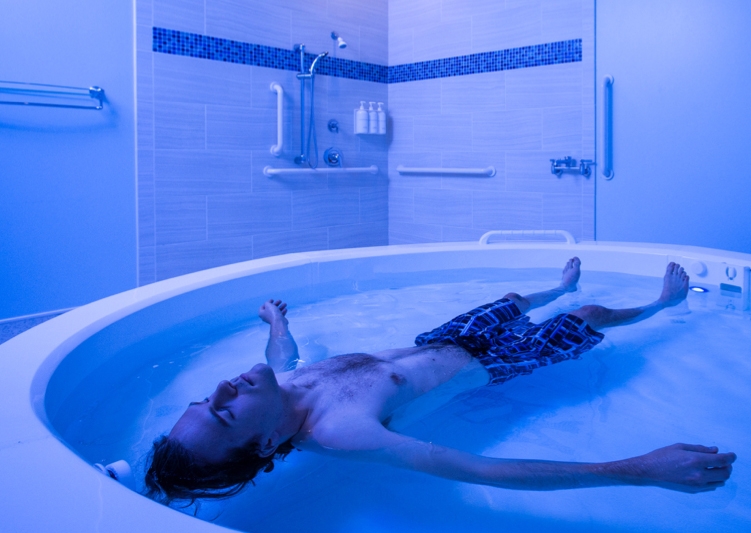
A contemporary flotation tank used in an experiment on symptoms of anxiety, stress, and depression.
Over the last century, various methods of modifying the brain’s function have been invented, tested and imagined. Today, we often think of the brain not just as a thinking machine but also as a trainable, plastic organ. There are numerous products available on the market that promise users the ability to modify or ‘hack’ their own brains, including smart drugs, electromagnetic brain stimulants, sound and light machines and neurofeedback devices. These devices are sold on the promise that individuals can improve their social and psychological selves by actively intervening on their own brain function.
In the 1950s, sensory deprivation was conceived as a new method of modifying the internal processes of the brain, raising fears and concerns about brainwashing and mind control. But it also opened up the possibility of intervention as a means of self-improvement, escape, or artistic creativity, anticipating an era in which the self-management of our brains has become a burgeoning industry.
Find out more about the Hidden Persuaders project examining ‘brainwashing’ in the Cold War at Birkbeck, University of London. The War of Nerves, an exhibition about the psychological landscape of the Cold War runs at the Wende Museum in Los Angeles until January 2019.
About the contributors
Charlie Williams
Charlie Williams is a postdoctoral researcher working with the Hidden Persuaders project at Birkbeck, University of London. His research explores Cold War culture through the lens of the human sciences with an emphasis on the psychological, emotional and economic relationships between humans and emerging 'psy' technologies.
Sarah Marks
Sarah Marks is a historian of twentieth century science and medicine, and Central and Eastern Europe. She is a postdoctoral researcher with the Hidden Persuaders project at Birkbeck, University of London, and is co-editor of the book 'Psychiatry in Communist Europe' (with Mat Savelli, Palgrave, 2015).
Daniel Pick
Daniel Pick is professor of history at Birkbeck, a psychoanalyst at the British Psychoanalytical Society, and the senior investigator on the Wellcome-funded Hidden Persuaders project. His publications include 'Psychoanalysis: A Very Short Introduction' (OUP 2015) and 'The Pursuit of the Nazi Mind: Hitler, Hess and the Analysts' (OUP 2012)
